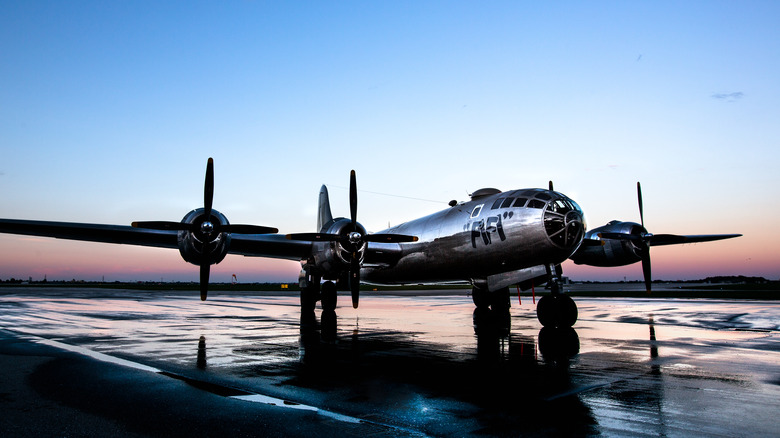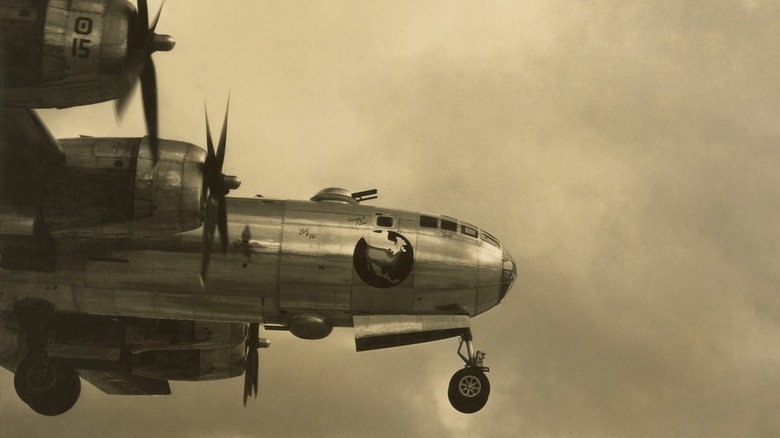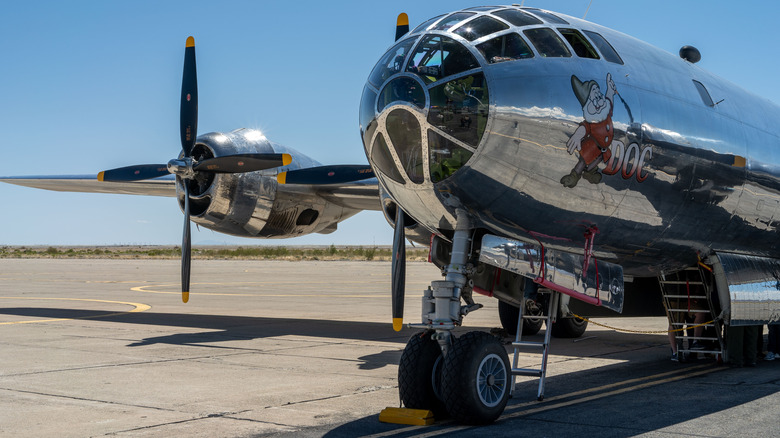Why The B-29 Superfortress Is One Of Boeing's Biggest Achievements
There are few machines as awe-inspiring as some of the largest aircraft ever designed. The gargantuan Stratolaunch Roc, for instance, is much more than just a sight to marvel at: It's mind-boggling to imagine it flying through the air. These are engineering feats that only aeronautics experts can really grasp, and those same people have developed some extraordinary machines.
Boeing's B-29 Superfortress, while not on the scale of the 1.3 million pound Roc, was a huge, dominant force of its own era. A mighty weapon from a terrible time in world history, the United States' Superfortress was a World War II bomber that boasted an astonishing arsenal.
The practicality and logistics of developing an aircraft of this caliber, especially at the time, was challenging to say the least. Here's a closer look at the development of the aircraft, what was taken forward from the lessons learned from its predecessor, and exactly what the resultant 141-feet-long bomber was capable of.
The brief for the B-29 Superfortress
The United States joined World War II on the Allied side in December of 1941, but the nation had already been developing sophisticated military systems prior to that. The Air Force made a request for an aircraft of lofty specifications in the previous year: An aircraft capable of carrying a 2,000 pound payload at least 2,650 miles.
To produce such an aircraft, Boeing took a step beyond its B-17 — the Flying Fortress — which would also feature prominently in the conflict. The B-17 was quite the achievement for Boeing in itself, sporting an innovative four-engine design, and in the case of the 1941 B-17E, equipped with an array of weapons (including Stinger turrets and .50 machine guns). The concept of an especially heavy bomber that could still outstrip those that came before was taken even further with the "Superfortress."
In terms of weight, there was no mass-produced aircraft model on the planet larger than the Superfortress at the time of its introduction. Some of the bomber's other traits only emphasized what a feat its development really was.
A Superfortress, indeed
Equipped with 20 mm cannons, .50 machine guns, and other weapons in an adjustable configuration, the Superfortress was deadly even when discounting its hefty payload of bombs. It also boasted a sophisticated firing system. In March 1945, Industrial Aviation magazine reported that after a gunner fires, "the complicated mathematical problem of accounting for speed of the enemy plane, its distance from the B-29, gravity and parallax is worked out at split second tempo" by the Superfortress' electronics.
More than just a sophisticated weapon, though, the aircraft was also incredibly advanced in other ways. Pressurized areas for those aboard were unheard of at the time, as was a bomber with a range of 5,830 miles. As models were introduced, so were additional boons, like the AN/APG-15B radar device built into the B-29B. In terms of both offense and defense, then, the B-29 family had some very advanced hardware for its time.
The aircraft would be in action until late 1960. Its time in service may have been relatively brief, but the one-time heaviest production bomber in the world was a formidable creation.


